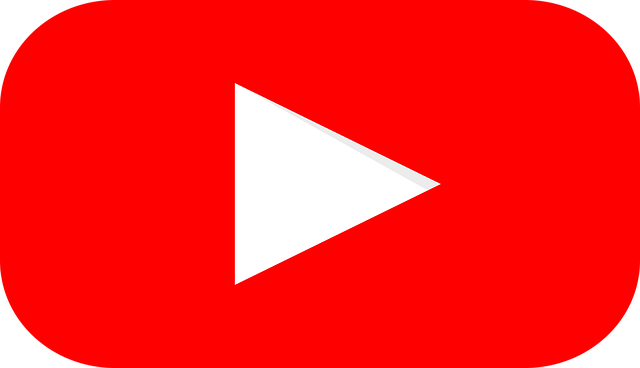Youtube Optimisation
Happy 2011 to all the viewers out there! The following post has some juicy tips for optimising your YouTube channel. Enjoy!
Channel settings recommendations
First up, take this chance to fill up all the details in your channel! Optimise your channel description and the “About me” section with relevant keywords. The channel description is like a quick overall statement about your website/business, while the “About me” section is more comprehensive and should list details such as the different categories that your business deals with. Also, good practice is to place links to other digital assets such as your Facebook/Twitter page, your main website and other relevant URLS.
You can change these details simply by logging into your YouTube account, going to your own channel page and click on the link “edit”. Below are two examples of channel descriptions from two large companies; one is very informative regarding the brand, and one includes many URL links. I recommend a balance of both from an SEO perspective.
Video Title
The title strategy should consist of the primary keyword, determined as the most relevant keyword with the highest amount of searches plus a short sentence with the suffix “- [brand name]” for branding.
Video Description
Start off your description with the primary keyword and your website address. The reason for this is that we want to increase the importance of the primary keyword and also to increase the visibility of the website address above the fold. The description allows for one line of text to be displayed. Only when you click on the description will it expand to show the full description.
Showing the primary keyword and the website address first encourages greater click through to the website and may also increase the relevance of the video and thus appear higher in search results for the primary keyword. (A lot of people tend to not expand the description).
A good example is the video http://www.youtube.com/watch?v=j59T09UQ9uc
Video with the one-line description with website address URL and keywords
Video with the full description.
If the URL/keyword was places below the fold, viewers will never see it unless they expand the description, hence the strategy to place it on the first line.
For more information on video description, visit http://help.youtube.com/support/youtube/bin/answer.py?hl=en&answer=95342
Using Annotation
Annotations used throughout the video are helpful in two ways: It creates internal linking between your own videos and also provides a way to socialise and interact with the viewer. Use annotation throughout the video to help engage the user and then direct them to your channel, a video or even search results. They are fully customisable in terms of the shape of the speech bubbles, the colour and the timing. The image shown above is an example of multiple annotations that are embedded on the video.
For more information visit the following reference: http://www.google.com/support/youtube/bin/answer.py?answer=92710&topic=14354
Submission of Video Transcripts
Submitting video transcripts will increase the videos significance, as transcripts can be used for relevance by YouTube while also providing sub-titles for accessibility purposes. In contrast, automated transcripts are not used for relevance by YouTube.
You can add transcripts by selecting Edit>Captions and Subtitles under any video.
For more information visit http://www.google.com/support/youtube/bin/answer.py?hl=en&answer=100077
Internal linking through playlists
YouTube playlists can be used to group similar videos together. Grouping videos into Playlists can have two benefits.
- Playlists tend to appear very high in the search results, which allow video owners to provide more results and take up more space on the page.
- Videos that are within a playlist will automatically link to each other as a ‘Next in <playlist title>’, which increases the chances of views, and click throughs.
To create a solid playlist structure, create a playlist that is parallel with the categories of your website, if possible.
Reference: http://help.youtube.com/support/youtube/bin/answer.py?answer=57792
Video Tagging Strategy
Keyword tags for each video should be created to categorise each individual video topic and help YouTube distinguish the relevance between the videos. This will improve the visibility of videos, especially if the viewer searches for a keyword which you have a tag for.
Hence, the strategy here is to submit a modest number of tags for your video. We don’t want to go overboard and “spam” the videos, as an excess of words do not sit pretty on the site. Instead, create about 5-10 tags per video.
The three types of tags each video should have are:
- Channel tag: Create a tag that is specifically used across all your videos on the channel. Using the brand name is common. If your company is XYZ Australia, then create a simple tag like “xyzaustralia”. More about this later…
- Category tags: Next, create a tag that is related to a certain type of video. If your XYZ Australia website is selling desktop computers and laptops, two separate areas, you should create tags to distinguish videos about each topic. A desktop-related video could have the tag “xyzdesktop”. The laptop could have the tag “xyzlaptop”. Try to mirror the types of video according to the themes on your website
- Keyword tags: These are normal keywords tags that you want the video to rank for. They can be the actual search terms, but also related terms to the keywords i.e. “how to fix a flat tyre”, a possible related term that I could think of is “vehicle repair”, “tyres” or “roadside assistance”.
Now for the reason why to have channel and category tags: YouTube uses tags to determine the relevance of the video to the keywords in the tag. If you have an over-arching channel tag across all videos, it may indicate to YouTube that all these videos relate to the brand XYZ Australia in some way. When you have the category tags, this indicates that the video is part of XYZ but it is focusing on desktop computers, instead of laptop computers. It really is all about relevance.
YouTube paid brand channel option
If you have a big enough budget, you can consider getting a paid brand channel as a luxury add-on to your YouTube media vehicle. YouTube offer advertisers various solutions for building their brand presence on YouTube. The YouTube Paid Brand Channel is much more customisable and engaging, allowing the advertiser to add new features such as the ones listed below:
- highlighting video in a mosaic format e.g. http://www.youtube.com/hpyourstory
- creating a video slider on top of the channel e.g. http://www.youtube.com/abc
- creating a video gadget as desired by the advertiser e.g. http://www.youtube.com/experiencewii
- a custom top navigation e.g. http://www.youtube.com/toyotausa
The brand gadget channels also allow 3rd party tracking and IP/ locale GEO redirect, to redirect a user to a localised version. Check out the full experience at Reference: http://www.youtube.com/user/advertise
In summary, a minimum media spend required of $60,000 on YouTube over 3 months. The one great thing I would like to mention with a paid brand channel is that you can actually have links in your video going out to your external sites instead of just within YouTube!
All the best for your YouTube success! Stay tuned for more social media optimisation posts.

LEAVE A REPLY














